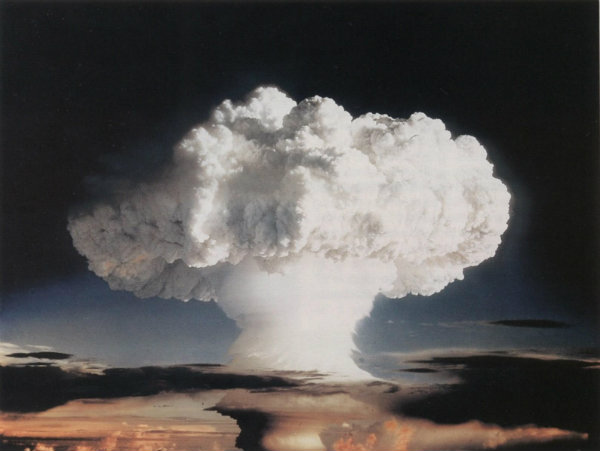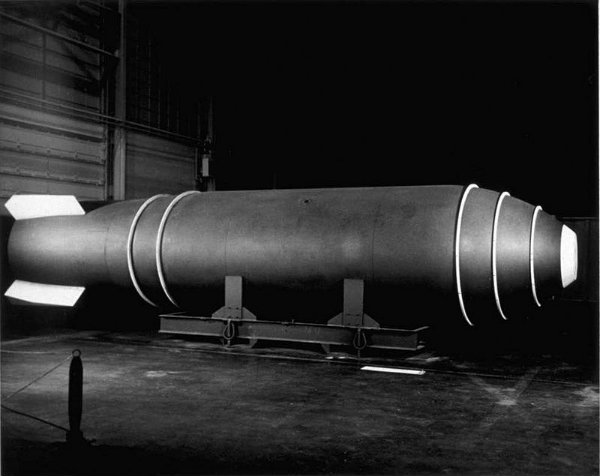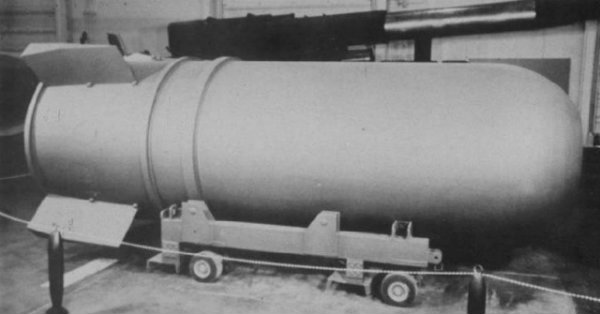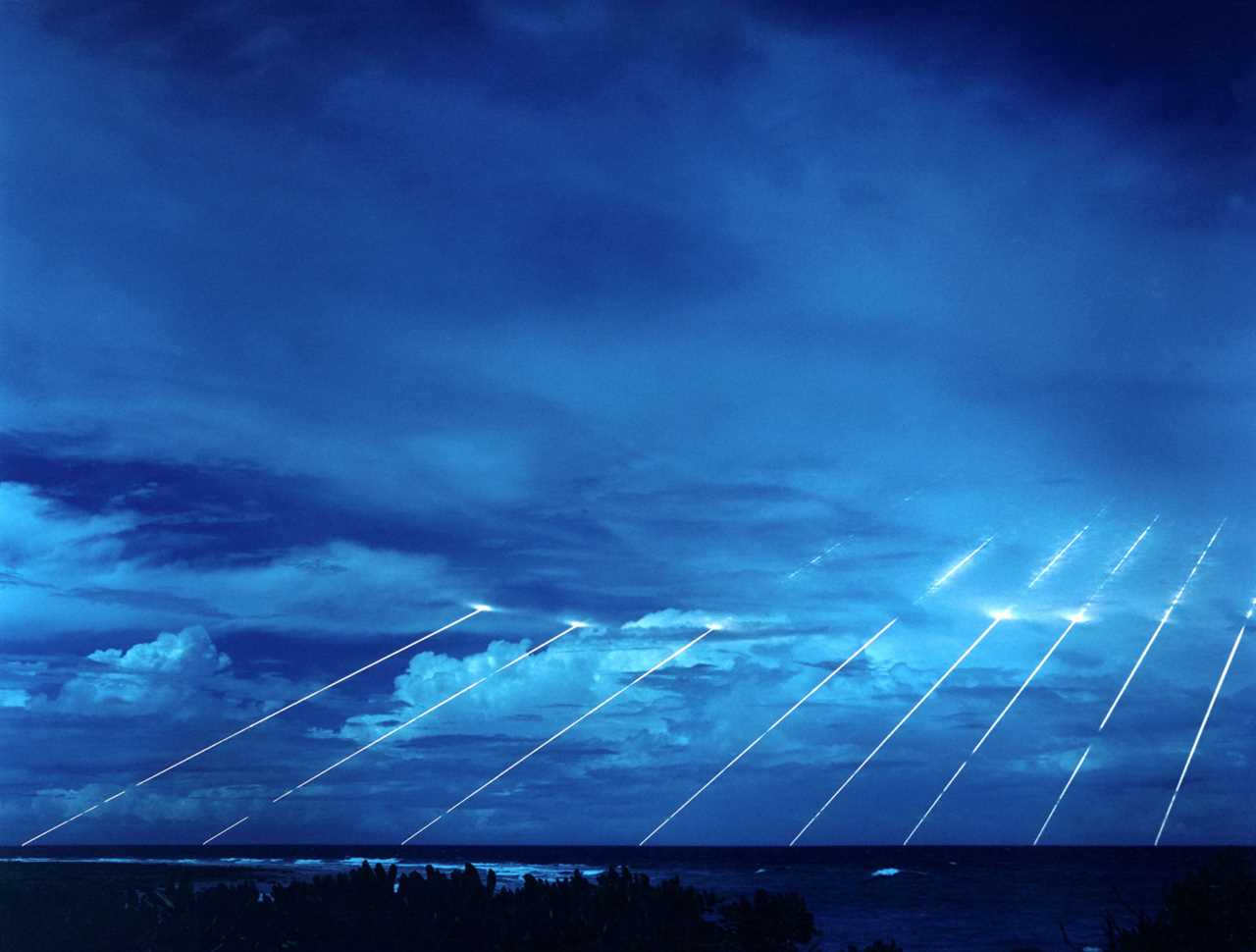Big nukes are like dinosaurs- they’ve made their mark on history and will likely not be seen again. The sheer power and destruction these high-megaton monsters could cause is mind-boggling, but it seems like it is better that countries are not racing for the biggest nuclear payload these days. That may sound reassuring, but it is not necessarily better that striving for that megaton payload is not the goal.
The evolved delivery systems have made nuclear weapons precision targeted rather than giant ‘dumb’ bombs. Before we get too far into that, let’s get to the list of the monsters of destruction, the seven biggest nuclear warheads ever detonated:
7. Mark-36 (10 Megatons, USA, 1956)
Based on what was learned from the Shrimp bomb (the first dry-fuel thermonuclear bomb), the Mark-36 was developed. The US made almost 1000 Mark-36 two-stage nuclear warheads. Many of them went on to be repurposed into Mark-21 bombs, which had a small 4-megaton payload in comparison. The rest were converted to Mark-41 bombs, with a much higher yield.

Mark 36 Nuclear Bomb
6. Ivy Mike (10.4 Megatons, USA, 1951)
Part of “Operation Greenhouse”, Ivy Mike was a stationary weapon detonated from scaffolding. It was used to research nuclear bombs and was a proof of concept. This concept was very important in creating larger payload bombs- fusion. Later, a simplified and lighter deliverable version was developed.

Ivy Mike Mushroom Cloud
5. Mark-24 “Yankee” (13.5 Megatons, USA, 1954)
In May of 1954, the Yankee prototype of the Mark-24 bombs was detonated as part of the Castle tests. Deemed a success, they went on to make over 100 more of the Mark-24 thermonuclear warhead.
4. Mark-17 (10-15 Megatons, USA, 1955)
Carried by B-36 bombers, this bomb weighed the most of any in the US arsenal. America produced about 200 of these big boys and they didn’t last very long. Lighter and more effective bombs only kept them active for about 3 years.

Mark 17 Nuclear Bomb
3. TX-21 “Shrimp” (14.8 Megatons, USA, 1954)
“Shrimp” was a part of the infamous Castle Bravo tests at Bikini Atoll. From its detonation spot in the Marshall Islands, radioactive material was detected in parts of Australia, Asia, Europe, and even the US. This is partly because it was detonated only 7 feet above the ground.
2. Mark-41 (25 Megatons, USA, 1958)
America made the second-largest bomb- and not just one. We made over 500. There were two distinct types of the Mark-41, where one model was “dirty” with a uranium casing.
The first prototype of this bomb was dropped in 1958 in a test code-named “Operation Hardtack.” Not to be confused with the survival bread. The high yield was achieved using a three-stage system.

Mark 41 Nuclear Bomb
1. Tsar Bomba (50 Megatons, Soviet Union, 1961)
With a much bigger payload than any other warhead on this list, the RDS-220 hydrogen bomb has earned its spot. The Soviet Union dropped this from a bomber in October of 1961 over the Arctic Sea.
The bomb was specially made with three stages instead of the typical two, and the payload was reduced from 100 MT to 50 MT to limit radiation exposure.
I Came Upon a Fork in the Road…
The nuclear race was in full swing while the Soviet Union was developing Tsar Bomba. The US completed testing on the Mk-41 three-stage bomb a full three years before the Soviet Union unleashed its 50-megaton creation. America beat the Russians to the moon- so why did they not beat them to the largest nuclear warhead? The answer is simple- tactics. The US figured out that the delivery method of the warhead can be just as important as the payload.
Guided bombs and ICBMs (intercontinental ballistic missiles) entered the picture, making the large ‘dumb’ bombs messy, imprecise, and difficult to deploy. Only one year after the Tsar Bomba, America had the Minuteman ICBM program in place and effectively prevented any attack with this constant threat of counterattack.
The US continued development into the Peacekeeper program completed in the 80s and had the ability to effectively nuke a ‘smiley face’ pattern into a target with multiple warheads on a single computer-controlled missile. The latest (much improved) version of the original ICBM, the LGM-30 Minuteman III is still in service today as the only land-based ICBM in the United States.

Time-lapse photography of the Peacekeeper re-entry vehicles.
The Final Word
So why does the rise and fall of high-payload nuclear bombs matter to preppers? It defines the nuclear threat that everyone should be prepared for.
An earth-cracking 1000-megaton thermonuclear warhead is not practical or probable, but coordinated ICBM strikes are probable when talking of nuclear war.
Our subscribers have also found these articles helpful:
- Fallout Shelters Near Me | Nuclear Bomb Bunker Locations
- 9 Nuclear Warheads America Lost and Never Recovered
- Nuclear Survival Kit Guide, Gear, and Checklist
Keep exploring, stay prepared, and be safe.
You’ve Been Missing Out
Join the 2+ million preppers that rely on our prepping advice by subscribing to TruePrepper.
- Practical guides and tips
- Useful survival giveaways
- Free, forever
- < 0.4% of people unsubscribe
Thanks for subscribing, reading, and welcome to the club.
The post The 7 Biggest Nuclear Warheads Ever Detonated appeared first on TruePrepper.
By: Rusty Collins
Title: The 7 Biggest Nuclear Warheads Ever Detonated
Sourced From: www.trueprepper.com/7-biggest-nuclear-warheads-ever-detonated/
Published Date: Thu, 13 Apr 2023 14:46:10 +0000
-------------------------------------------------------------------------
 CampingSurvivalistHuntingFishingExploringHikingPrivacy PolicyTerms And Conditions
CampingSurvivalistHuntingFishingExploringHikingPrivacy PolicyTerms And Conditions
